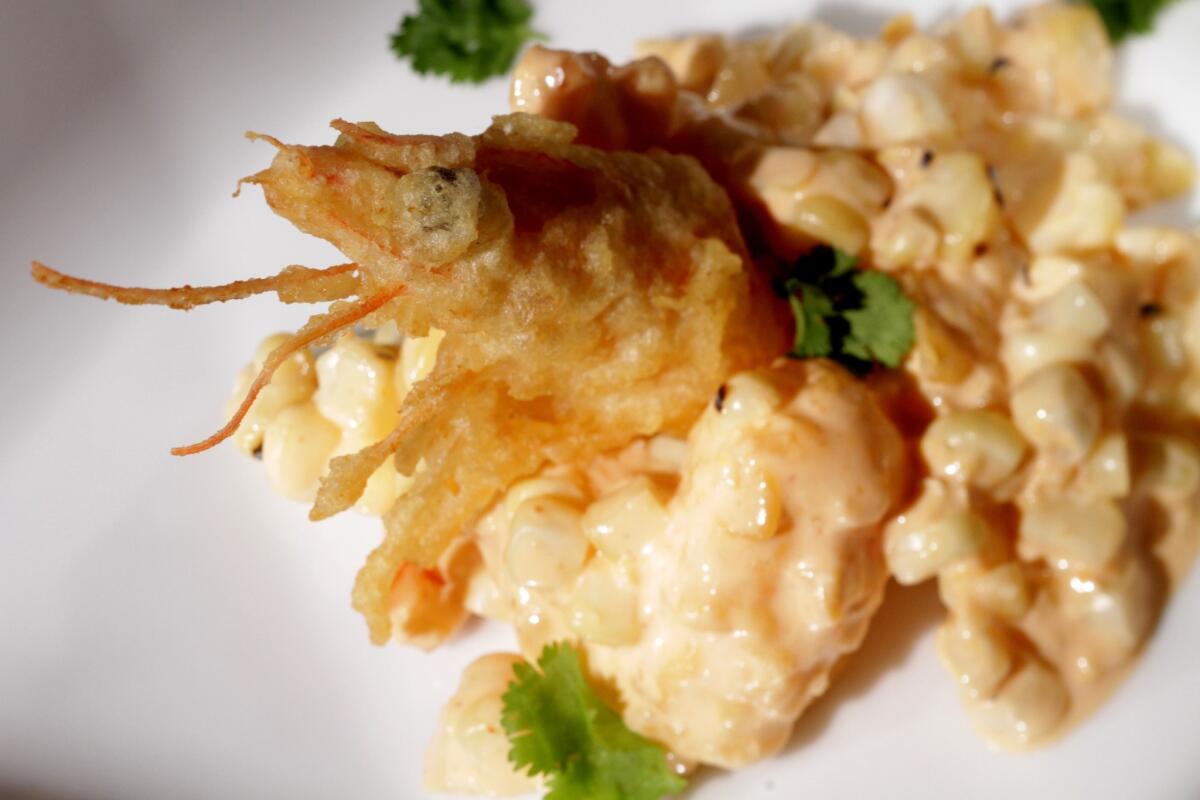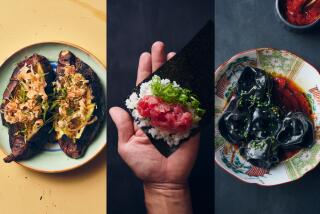Chef John Sedlar continues the evolution of fusion cuisine

- Share via
All restaurants, and their menus, evolve over time, just as their chefs do. Any serious chef working today is constantly bombarded by information and inspiration — from traveling, from reading magazines and newspapers and the Internet, from the ever-shifting interests and tastes and demands of restaurant guests.
We’ve undergone that kind of evolution at Rivera. When we opened in downtown Los Angeles almost seven years ago, we offered what we called contemporary pan-Latin cuisine, with a menu that traced five millenniums of cooking across Mediterranean Europe and the Americas.
Over time, though, Rivera’s focus has naturally evolved. One major factor has been its downtown location. To get to work, I drive every day through the world’s largest expatriate Korean community. Just blocks to the north of Rivera are thriving Japanese and Chinese hubs.
More and more, Rivera’s menu has reflected the fact that we can’t talk about the history and diversity of Latin cuisine in Los Angeles without also embracing the many cuisines of the Pacific Rim.
The term “fusion” has long been applied to such a melding of Eastern and Western influences, and it’s certainly apt here.
But “fusion” itself has evolved dramatically. In the beginning, it seemed limited — though very creatively — to a blending of classical European (read “French”) technique with Asian ingredients. Today, by contrast, fusion is much more freewheeling across a wide variety of cuisines. Korean tacos. Kimchee pizzas. My own pot stickers filled with Mexican pork en pibil or my New Mexican-style stacked blue corn enfrijoladas filled with duck confit and goat cheese and served with a red wine reduction.
All these so-called new fusion dishes speak to an inclusively global attitude that might have boggled the minds of the movement’s earliest fans.
That shift in perception has come more vividly into focus for me over the last couple of months with the arrival in my kitchen of a new chef de cuisine and old friend, Hisashi Yoshiara, who first worked with me in the early 1990s at Bikini, a restaurant I’d opened back then in Santa Monica. Our explorations of culinary fusion, begun almost a quarter-century ago, picked up right where they’d left off, with the added energy of everything we’ve each experienced in our respective careers during all those years.
Think bodega meets izakaya.
Our take on shrimp tempura is served with an aioli flavored with aji amarillo, the hot, vivid yellow chile paste of Peru, a nation whose cuisine has itself been influenced by the many Japanese who began immigrating there in the late 19th century. Aji amarillo paste may be found in well-stocked markets or bought online, or you can substitute any other chile paste or sauce you like, including the popular Thai Sriracha. Try the aioli with other tempura seafood too, such as scallops or strips of thin, firm, white-fleshed fish fillets of your choosing.
What’s most surprising to me about dishes like these is that, regardless of how new and original they may be, they also seem oddly familiar. I think that familiarity is a true measure of just how much fusion has become an integral part of the evolution of the Los Angeles food sensibility.
John Sedlar is chef-owner at Rivera restaurant in downtown Los Angeles.
More to Read
Eat your way across L.A.
Get our weekly Tasting Notes newsletter for reviews, news and more.
You may occasionally receive promotional content from the Los Angeles Times.










